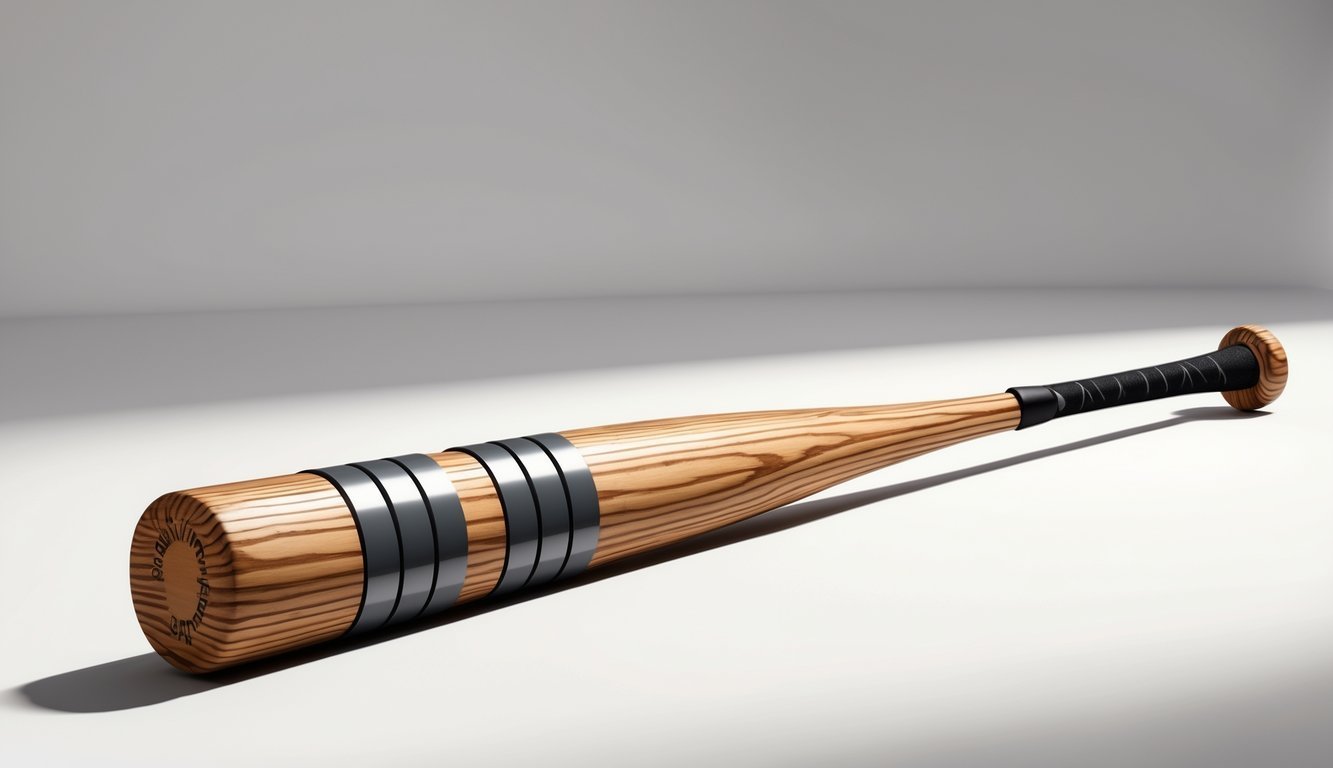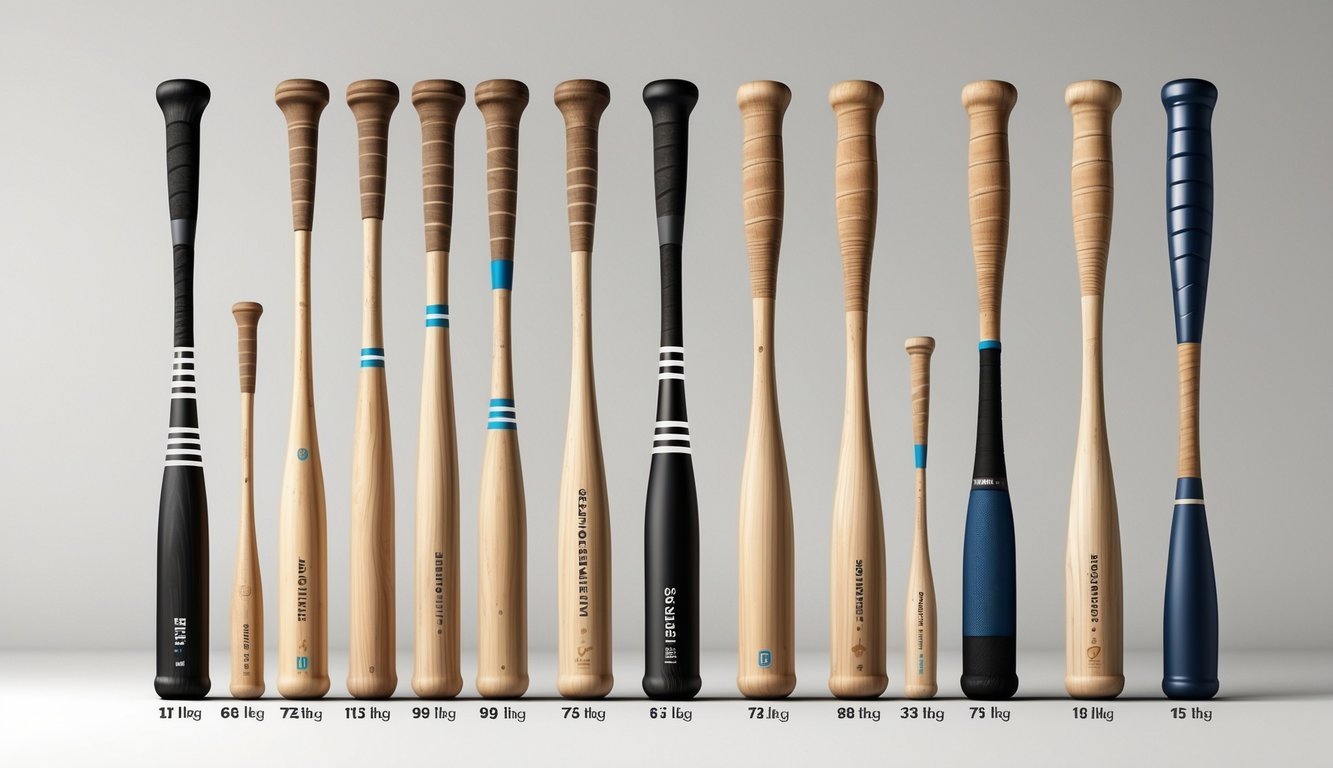PsychNewsDaily Publishers
100 Summit Drive
Burlington, MA, 01803
Telephone: (320) 349-2484
PsychNewsDaily Publishers
100 Summit Drive
Burlington, MA, 01803
Telephone: (320) 349-2484
Baseball bat weight significantly impacts swing speed and hitting power, with optimal weights ranging from 30 to 36 ounces based on player size and strength.

When you pick up a baseball bat, its weight changes how you swing and hit the ball.
Baseball bat weight is measured in ounces. Finding the right weight helps you control your swing and make solid contact.
Most bats weigh between 30 and 36 ounces.
You might need a lighter or heavier bat depending on your size and strength.
Choosing the right bat weight really matters for your performance.
A bat that’s too heavy slows you down, but a bat that’s too light doesn’t give you much power.
You want a balance that feels good and lets you swing with confidence.
When you understand how bat weight works and what fits you, your game can get better.
Whether you’re just starting out or dreaming of playing like a pro, knowing this stuff can change your baseball experience.

When you choose a baseball bat, knowing how weight affects your swing is huge.
Bat weight links closely to length and how balanced it feels in your hands.
If you understand the terms and measurements, you can pick the right bat for your size and skill.
Bat weight is just how heavy the bat is, measured in ounces (oz).
This weight changes how fast and easily you can swing.
A heavier bat can hit the ball harder, but it might slow your swing down.
A lighter bat lets you swing faster, but you might lose some power.
Your bat’s weight matters because it affects how you control it during a game.
Players often try different weights to find what feels best and works with their strength.
Bat weight shapes not just speed but your whole swing technique.
Bat length is measured in inches, usually from 24 to 34 inches for youth to adult players.
Longer bats are generally heavier.
But if a bat is too long or heavy, it gets hard to swing well.
Your height and strength should help guide your bat length and weight choice.
A bat sizing chart can help you find the best fit for your measurements.
For example:
| Player Height | Bat Length (in) | Bat Weight (oz) Range |
|---|---|---|
| Under 4’6″ | 24 – 26 | 14 – 16 |
| 4’6″ – 5’0″ | 27 – 29 | 16 – 18 |
| 5’0″ – 5’6″ | 30 – 31 | 18 – 20 |
| Over 5’6″ | 32 – 34 | 20 – 30 |
Choosing a bat with matching length and weight helps your balance and swing control.
Weight drop is the difference between a bat’s length in inches and its weight in ounces.
You’ll usually see it as a negative number, like -3, meaning the bat is 3 ounces lighter than its length.
For example, a 34-inch bat weighing 31 ounces has a drop weight of -3.
This number lets you compare bats of similar lengths but different weights fast.
Swing weight is how heavy the bat feels when you swing it, which depends on how the mass is balanced.
Bats with a higher swing weight feel heavier at the end, so you might get more power, but your hands could slow down.
You want a bat with a weight drop that matches your strength and skill.
Youth players usually use bats with bigger drops (like -10 or more) to keep their swings quick.
High-level players often pick bats with smaller drops (-3) since those bats are heavier and offer more power.

If you pick the right bat weight, your swing speed, power, and hitting form all get better.
Think about your age, skill level, how you like to hit, and your league’s rules.
Each of these shapes the best bat weight and size for you.
Younger or less experienced players usually do better with a lighter bat.
A lighter bat helps you swing faster and learn proper form.
Players in Little League often use bats that match their height and weight, which gives them control and better contact.
Use a bat size chart based on your height and weight to pick the right length and weight.
Someone between 4’5″ and 4’8″ and weighing 150 to 170 pounds might try a 31-inch bat.
Professional players handle heavier bats because they’ve built more strength and skill.
Choosing the right weight helps you develop your swing.
If you use a bat that’s too heavy, it can slow you down and mess with your mechanics.
Your personal taste counts a lot when you pick bat weight.
Some players want lighter bats for quick swings and more bat speed, which can help with contact.
Others look for a heavier bat for extra power.
Try swinging different weights and see what feels right.
If a bat feels heavy or tiring after a few swings, it’s probably not for you.
Think about your hitting style.
If you focus on power, a heavier bat might work.
If you rely on fast, controlled swings, go lighter.
Your hand and grip matter too.
A bat that balances well in your hands lets you hold it firmly without strain.
Every league has its own rules about which bats you can use.
These rules change depending on the governing body, like USA Baseball, BBCOR, or USSSA.
Always check what’s allowed in your league before you buy a bat.
Little League and Babe Ruth leagues usually require bats certified by USA Baseball for safety and fairness.
High school and college players stick to BBCOR standards, which limit how light and powerful a bat can be.
If you use a non-approved bat, you might get penalized or even disqualified.
Make sure your bat fits the length, weight, and drop criteria listed by your league.
That way, your equipment stays legal and competitive.

Choosing the right bat weight depends on things like age, height, and your swing speed.
You also need to think about how bat weight changes power and control.
Different measures, like pounds and kilograms, come into play when you pick your bat.
Youth bats usually weigh between 16 and 30 ounces.
The weight depends on the bat’s length and what it’s made from.
Younger players do better with lighter bats so they can swing quickly.
As kids grow, they can handle heavier bats that bring more power.
Bat drop weight is the difference between length (in inches) and weight (in ounces).
A bigger drop means a lighter bat that’s easier to swing but doesn’t have as much power.
Taller players usually go for longer and heavier bats.
The bat should feel balanced and easy to control for the player’s size.
Lighter bats help you swing faster but might reduce your power.
Heavier bats add power but can slow your swing, so you need to find a balance that fits your style.
One pound is about 0.45 kilograms, give or take. That’s a handy number to remember if you’re trying to make sense of bat weights listed in different units.
Before you decide, double-check which unit the bat’s weight uses. It’s easy to get tripped up if you mix them up.